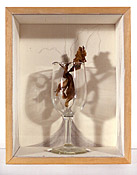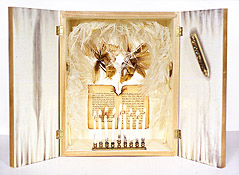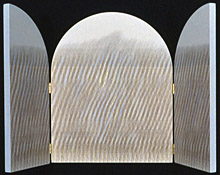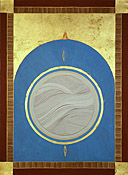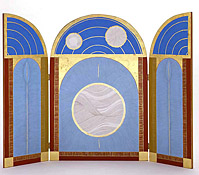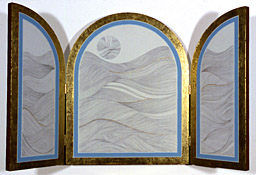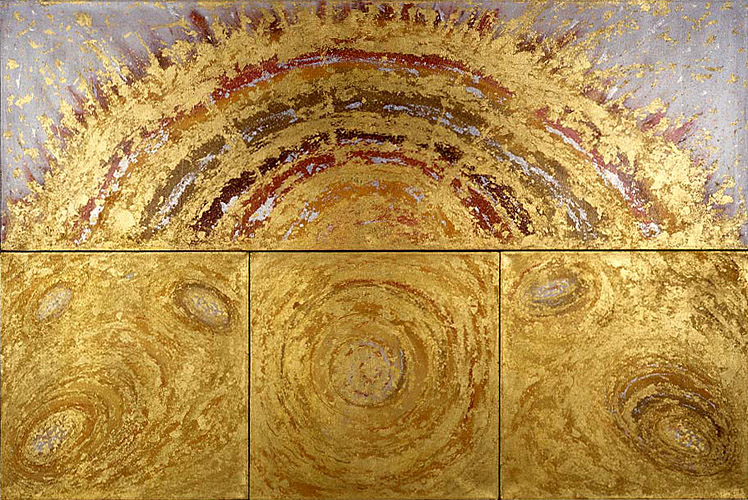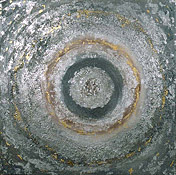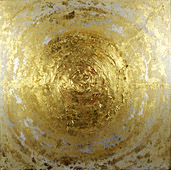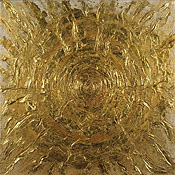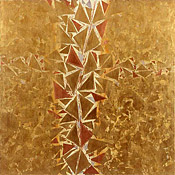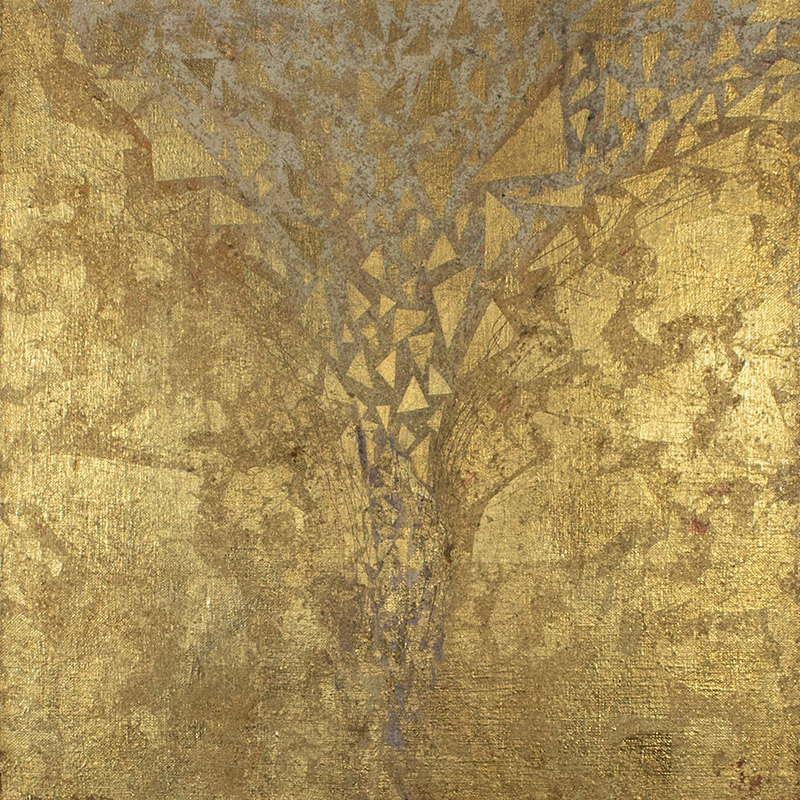

I began working on a series of box sculptures in 1977. I had preserved a small dried orchid that I had used for a series of orchid drawings, and it became the starting point for a box sculpture entitled "Orchid Reliquary #1." This led to a series of shrines and altars now including found objects of all kinds as well as silverpoint drawing. Some of the boxes drew from personal memories or travels and others used religious themes. A number were included in a seminal exhibition entitled "Jewish Themes/Contemporary American Artists" at the Jewish Museum, NYC, in 1982; Grace Glueck in a New York Times review of the show called attention to my "small, Cornell-like boxes that deal with Jewish ritual."
Two experiences were critical for a series of works on paper and wood entitled Judean Desert. First was a visit to Israel and a drive through many parts of the desert, in and out of sandstorms. The other was a visit to the Jewish Theological Seminary in New York; I was looking at illuminated manuscripts when I realized that the spacing guidelines were done in silverpoint. These grids counterpointed with memories of the desert to become the basis for the series.
"There is a deceptive simplicity to Schwalb’s limited repertoire of symbols, forms and colors, most notably the powdery blue that evokes clear skies. A closer inspection reveals a greater complexity in her use of detail. Silverpoint affords Schwalb a greater clarity of line that she uses to great emotional effect.…..
![]() Many pieces are three-dimensional altar pieces set either on walls or pedestals. "Creation XVII" features a central blue arc bound on either side by separate halves of another arc. In the center of the whole arc is a circle filled with one of Schwalb’s characteristic vortexes. The flow of loose, long lines (they could be strands of hair) forms the illusion of rolling hills or ocean waves receding in the distance. While the blue space is totally flat and frontal, the circle pulls the viewer into another dimension."
Many pieces are three-dimensional altar pieces set either on walls or pedestals. "Creation XVII" features a central blue arc bound on either side by separate halves of another arc. In the center of the whole arc is a circle filled with one of Schwalb’s characteristic vortexes. The flow of loose, long lines (they could be strands of hair) forms the illusion of rolling hills or ocean waves receding in the distance. While the blue space is totally flat and frontal, the circle pulls the viewer into another dimension."
— Jude Schwendenwien, The Harford Courant, October 25, 1992
"Using the arc and the circle representing the universe and the earth, Schwalb creates vividly colored works that combine silverpoint, gold leaf …. Here the artist contemplates spiritual existence, using brilliant sky blues, steel blues, waves of sepia, deep wine reds, and subtle filigree of silver lines…."
— Cassandra Langer, Women Artists News, Fall 1990
The paintings from my Galaxy Series evoke the inconceivable spaces of the expanding cosmos, punctuated by shapes that may bear a distant resemblance to nebulae or comets but are intended more as symbols of the swirling energy of matter. A glimmering golden light suffuses these paintings, a light far more continuous than anything we can see in the night sky.
"Like the cosmic forms she takes as her subject, the style of Galaxies and Other Matter is explosive. Freely painted and dynamic, these paintings leave behind the quiet discipline of silverpoint. Images of swirling galaxies and planetary nebulae emerge out of a painterly ground. The forms evoke the mysteries of the cosmos and our relationship to the infinite. Schwalb takes us inside a twenty-first-century wilderness whose magnificence is only vaguely knowable through science—the tools of magnification, the physics of light, and gravitational theories.
…
![]() Schwalb’s use of so much gold is striking and unapologetic. There is a hint of Yves Klein, an artist who, like Schwalb, was engaged with the subject of materiality and the infinite, and through his theatrical gestures forever imbued gold leaf with irony. But Schwalb’s multiple panels suggest Renaissance altarpieces, and her concern with formalism and the spiritual takes more from the traditions of Rothko than from postmodern critiques of art making."
Schwalb’s use of so much gold is striking and unapologetic. There is a hint of Yves Klein, an artist who, like Schwalb, was engaged with the subject of materiality and the infinite, and through his theatrical gestures forever imbued gold leaf with irony. But Schwalb’s multiple panels suggest Renaissance altarpieces, and her concern with formalism and the spiritual takes more from the traditions of Rothko than from postmodern critiques of art making."
— Joyce Cohen, Art New England, August/September 1996
